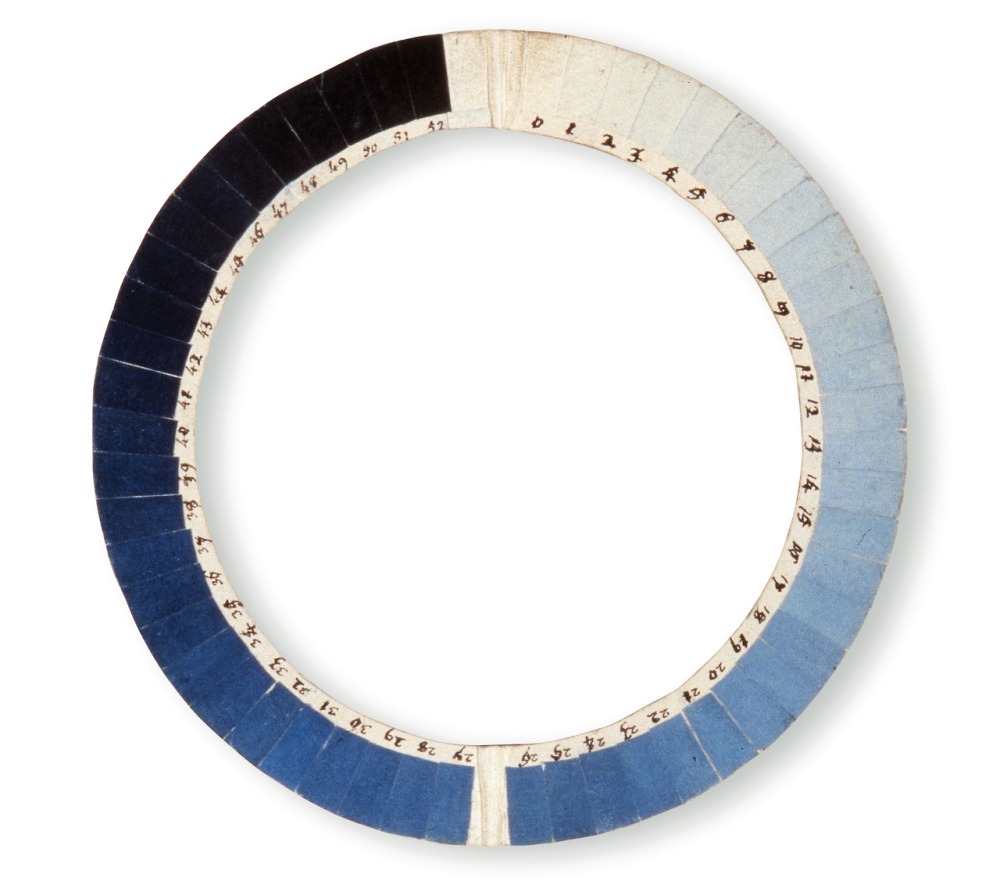The way my friend put it today was “so there’s this manб slouching in his court yard, yawning slowly as his work for today is done, and thinking of the transience of being. It’s 18 century, the age of enlightenment. Ok guys we’ve got to get enlightened, shall we? Where do we start? Let’s start from there (points to the sky). Where’re all my best colors of blue? Why there are so many of them? I need to organize them all!”
That’s how, according to her, the cyanometer has appeared. Cyanometer is an 18 century device designed to measure the blueness of the sky. It was invented in 1789 by Swiss physicist Horace-Bénédict de Saussure (born on the same date as me) and German naturalist Alexander von Humboldt who used the circular array of 53 shaded sections in experiments above the skies over Geneva, Chamonix and Mont Blanc.

Saussure’s cyanometer has 53 sections, ranging from white to varying shades of blue and then to black, arranged in a circle.
Saussure studied meteorology and apparently appreciated the order and clarity in his work. He’s the author of quite a few pretty interesting measurement devices like the diaphanometer for judging of the clearness of the atmosphere, the anemometer for for measuring wind speed and the mountain eudiometer for ascertaining the purity of the air or the quantity of oxygen it contains. With cyanometer Saussure was able to prove that the blueness of the sky is a measure of transparency caused by the amount of water vapor in the atmosphere.